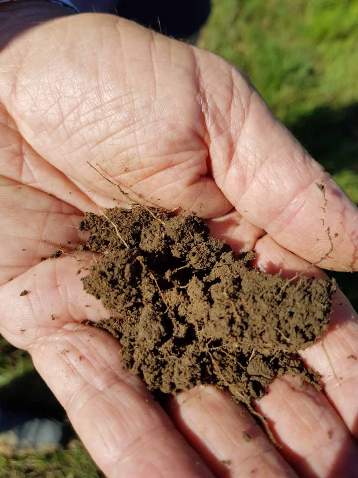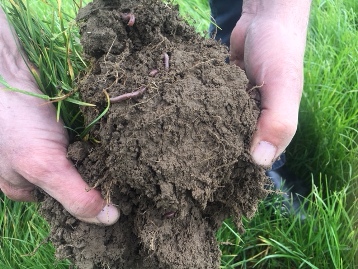

A balancing act – naturally
By John Barnes
Before we tackle a problem, it’s often best to step back and look at the bigger picture. If we can understand the whole issue – its symptoms, causes and possible solutions – we’re usually better placed than if we concentrate solely on the problem.
Agriculture works with things of nature…… with natural systems, with living biological species of plants and animals, with the natural environment. Nature, of course, is incredibly complex – even a tiny cell is more complex than any man-made machine.
The study of the way in which natural organisms (plants and animals) and their environment inter-relate is known as ecology. Like the gears and levers of a machine, each “part” of nature has its own tasks and functions. Together, the “parts” form a larger entity – ecosystem, to use the terminology of ecology. An ecosystem works under certain natural laws, and a further problem or penalty follows if you break any of these. The better we understand ecosystems and how they operate, the more chance we can cope with problems – or, even better, avoid them.
In terms of agriculture, the most important natural system is the general food chain. The basic food cycle is very simple, and most of us are subconsciously aware of it.
Lets start with the organisms we are most familiar with – our domesticated animals, and ourselves. We consume mostly plant and animal material. Domestic animals eat plants, almost entirely. Plants, however, make their own food through the photosynthesis process. They do this within their leaves, using carbon dioxide, water, mineral nutrients and light energy.
However, the food chain could not operate if that’s all there was to it.
Animals produce what we commonly call waste, mostly manure and urine. Most crop plants also produce unused roots, stalks and leaves, manure and plant residues we call organic mater. This is returned to the soil where it decomposes into humus, forming natural food for plants, and providing them with nutrients they need to survive.
This cycle runs on energy just as a man-made machine does. Energy stored by the plant moves through each step of the system. It works under definite rules, and a flaw in any part of the system creates a problem at the next step. In other words, the “balance of nature” can be upset – and we can do this easily.
The science of ecology is based on the view that everything is connected to everything else – a view reflected in the way natural systems are organized, functions and continually interacts.
• John Barnes is the CEO of NZ Global Eco Systems Ltd and Managing Director of Fertilizer New Zealand. Contact us for more information.
Bottom line based in the soil
By John Barnes
Animals need food for two reasons – to produce energy; and to build new cells and grow, reproduce, repair injury, and produce milk or eggs.
Animals normally use carbohydrates and fats as “fuels”, although proteins can also be used for this purpose in times of starvation or excess. As far as growth is concerned, the essentials are proteins and minerals (calcium and phosphorus for bones and teeth, iron in the blood, sulphur in some amino acids).
But the cellular metabolic activities of both energy production (catabolism) and growth (anabolism) also require thousands of different enzymes, each of which consists of a protein and a cofactor (a mineral element or a vitamin). So, there is a need for vitamins and minerals such as copper, zinc, iron, calcium, potassium and magnesium.
Some minerals also perform other vital functions. Phosphorus is part of the energy-carrier molecule; sodium and potassium regulate internal water balance; chlorine and potassium regulate pH; iodine is part of the thyroid hormone.
And then there’s water – an essential nutrient substance as it is a necessary component of all living cells. Indeed, cells are mostly water – 70% in the case of an average animal cell.
The essentials
Some nutrient substances are essential in an animal’s diet; others can be manufactured within the animal’s body or cells. On the “essential” list are: calcium, phosphorus, sodium, potassium, chlorine, magnesium, iron, manganese, copper, zinc, fluorine, sulphur, iodine, cobalt.
Around 10 of the amino acids, and vitamins are also essential. However, in ruminants and most plant-feeding animals, some amino acids and vitamins are provided by the bacteria living in the digestive tract. Most animals apart from humans, monkeys and guinea pigs can manufacture their own vitamin C.
But there’s more to feeding animals than just the presence of the essential nutrients. They must be present in the proper amounts and proportions to ensure optimum good health. For example, a lactating cow needs a large daily supply of calcium, but just a touch of cobalt. Some elements, such as fluorine, are toxic in too-large amounts. Some interactions can damage animal health.
As is so often the case, good animal health depends not just on heaps of any old food, but on high-quality food in the right proportions.
The most precise way to determine the energy value of food is to count calories (kilojoules in the metric lingo) just as humans do. A calorie, or kilojoule, is a measure of heat energy (the amount of heat required to raise the temperature on one gram of water by 1Cº).
Another measure of food value is the biological value. It is not a direct measure of total food value, but of protein quality. It compares the relative proportions of essential amino acids in the food with the animal’s needs. A protein lacking any essential amino acid is a poor-quality protein.
All of this reinforces the message that the quality, not just the bulk, of food is extremely important in promoting animal health. And the amount of those amino acids is one of most important aspects of food quality.
The amino-acid production of plants grown in mineral-deficient soil has been shown to be unbalanced. And animals are known to grow better when fed food where all nutritional substances are in balance.
The bottom line
The bottom line of feeding agricultural animals is their efficiency in converting food into meat, milk, eggs or wool. This goes beyond just the digestibility and assimilation of food into body cells. Farmers are paid according to production, and quality is generally as important as quantity in determining prices.
Food efficiency also varies from species to species. Dairy cows are around 25% efficient in using food calories and 34% efficient in converting proteins into milk; a hen is 10% efficient for calories and 16% for proteins in egg production; a beef steer is 3% efficient for calories and 9% for proteins in producing meat.
There are other variables, too – the breed or variety of animal, the presence or absence of the various stresses, genetic variation of individual animals, and the quality of food the animal eats.
A small increase in food quality can lead to a much greater increase in food efficiency and production, and in farming efficiency. In some cases, less of the correct food can produce more output.
Sounds like farming paradise. So what’s the catch? It all goes back to the soil and the proper fertility for the plants that grow in it, and the flow-through effect to providing animals with the correct balance and quantity of feed.
But, as with most things, it all starts with the basics – in this case, the soil.

• John Barnes is the CEO of NZ Global Eco Systems Ltd and Managing Director of Fertilizer New Zealand. Contact us for more information.
